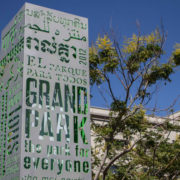A NEW comprehensive report examining Los Angeles County’s park needs revealed that nearly half of residents live more than half a mile away from a park. The report comes as funding for County parks nears expiration in 2019.
“I don’t believe this type of needs assessment has ever been attempted anywhere in the country before,” said Rita Robinson, director of the Los Angeles Countywide Parks & Recreation Needs Assessment effort, in a statement. “The wealth of data that we have accumulated and the feedback we have received from every community in the county will allow us to capitalize on future funding opportunities to expand our recreational and park resources.”
The LA County Board of Supervisors ordered the parks-need assessment in February 2015 as a way to build support for the next parks bond.
On May 3, the Board of Supervisors, and LA County Regional Park & Open Space District during its regular meeting presented two options for a 35-year park parcel tax measure for the November ballot. One would assess a 3-cent parcel tax per square foot, while the other would assess 5 cents. The smaller tax would generate $189 million per year, and the higher rate would bring in $390 million per year.
The comprehensive study took 16 months to complete. Among metrics used in the study included an examination of how many acres of park there are per 1,000 people, what amenities are available in each park and how much park land is available to residents in the area around each park.
A total of 188 areas were studied and the report, which is the first time such a report has been done in the county, found that there is an average of 3.3 acres of parkland per resident in the County. However, a number of areas were reported to have less than 1 acre of parkland per 1,000 residents, including El Monte (0.4), Huntington Park (0.7), Compton (0.6), Baldwin Park (0.3) and Universal City (0.8), among others.
“We hear a lot of talk about creating a sustainable, healthy Los Angeles and local neighborhood parks play a critical role in that,” said Viviana Franco, executive director of non-profit organization From Lot to Spot, which transforms old lots in Los Angeles into greenspace. “Parks are a community’s social, cultural and economic center, a resource for health and way to give residents safe access to nature. We must invest in our parks if we want our communities to thrive.”
Andrew Yip, program coordinator at BikeSGV, a project under non-profit public charity Community Partners that aims to support a more bicycle, pedestrian and transit-friendly San Gabriel Valley, said many communities are losing open space and park space. During a roundtable hosted by New America Media, he talked about a park in the San Gabriel Valley that had been converted to housing.
Yip further noted that communities of color have some of the highest rates of obesity and diabetes.
“When there’s a lack of park space, there’s a lack of opportunity for people to exercise and play, and we can’t expect all them to spend money to drive to national parks. We can’t expect them to go elsewhere. This is where they live. A lot of our community residents, they’ve never been outside this 10-mile radius. So we need to bring the parks to them,” he said.
Current funding for LA County parks was approved by voters in 1992 and 1996 when Proposition A – the Safe Neighborhood Parks Act – passed, which authorized an annual assessment on almost all parcels of real property in the County. The measure that was passed in 1992 has expired; The smaller amount of funding approved in 1996 will end on June 30, 2019, said James Beesley, district administrator for the Open Space Project, according to the San Gabriel Valley Tribune.
Funds from Proposition A have funded well-known open spaces including Griffith Park and the Hollywood Bowl.






